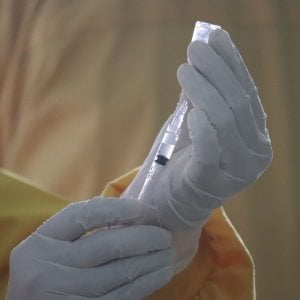The history of Luca Delfino sentenced to almost 17 years in prison for the murder of his ex-girlfriend Antonella MultariAnd for a few days entered the Residence for Security Measures (REMS) of Genova Prà, arouses the interest of the mass media. This is even more true after the interview with his lawyer, who stated that he was never treated, treated or treated during his detention.
The partial vice of the mind
Despite the murder, Luca Delfino served a limited time in prison because at the time of the trial he was found to have a partial mental defect provided for by the lawArt. 89 of the Penal Code from 1930.
During the expert work, he would have been diagnosed with a severe personality disorder with borderline, narcissistic, paranoid, antisocial and sadistic traits.
The closure of OPGs and the role of REMS
After the sentence was recognized as socially dangerous and served, placement in a forensic psychiatric hospital was considered to secure placement. But The OPGs with Law 81 of 2014 were rightfully closed for good. That’s why it existedEntry into REMSa structure with exclusively internal health management with a maximum of twenty places and provision of an external perimeter security and surveillance activity.
The murder of Barbara Capovani
This news episode after the psychiatrist’s murder Barbara Capovani by a former patient of his and other episodes of prison violence draw public attention to the issue of the relationship between mental health and justice.
Appeal from two thousand psychiatrists for the killed colleague: “We need maximum safety routes”
First, there is a need to invest in mental health protection in prisons in terms of humanisation, environment, training and professional resources with greater synergy between judicial and health professionals.
A national plan should be promoted involving all stakeholders, from the department of prison administration to health and justice, recognizing the need for greater investment not only in resources but also in culture.
However, it should also be noted that in recent years we have seen an increase in the number of people who do not have a mental illness and who are on a waiting list for REMS. On the other hand, there has also been an increase in the number of people committing crimes not intended for the Rems, according to the ASL’s relevant mental health department (DSM), already with a lack of resources and increasing criticality, further specifying the Justice as an alternative to prison, more for personality disorders with addiction problems than for serious psychiatric pathologies.
Not to mention the waiting list of hundreds of people on security measures, some of whom remain in prison awaiting admission to the Rems, for which Italy has already been condemned by the European Court of Justice.
To what extent can mentally ill people be dangerous?
by Massimo Cozza

More generally, there is an increasing tendency to assign psychiatric functions to social control, custody, rather than care. Violent acts are often attributed to psychiatric disorders, even though they are part of the human condition, which can manifest themselves for a variety of social, cultural, historical, educational, and environmental reasons.
What can politics and institutions do?
Some of these critical issues have already been highlighted Constitutional Court in sentence 22 of 2022, and now politicians and institutions appear to be tackling this issue, with draft legislation and the recent establishment of a technical table at the Ministry of Health in collaboration with the Ministry of Justice. It is a complex issue that begins in prison, but which combines the right to treatment with the right to safety, and for which the best possible solutions must be sought, but without going back to the OPG’s past.
Massimo Cozza, psychiatrist, director of the mental health department of ASL Roma 2



